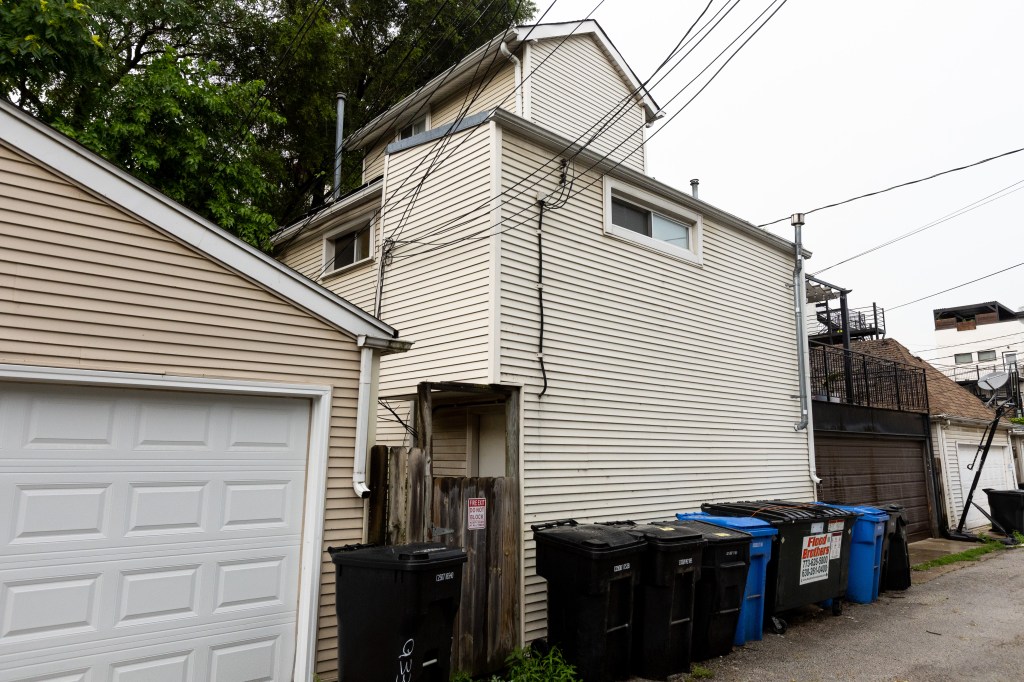A long-running fight over whether Chicago should broadly legalize outlawed coach house “granny flats” and basement units is set to come to an end later this month, aldermen say.
Two aldermen with dueling ordinances that would chart sharply different futures for “additional dwelling units” said Monday that they will hold votes later this month.
A version sponsored by Ald. Bennett Lawson, backed by Mayor Brandon Johnson, would make the additional units legal throughout the entire city, with per-block limits in single-family residential areas. A competing plan from Ald. Marty Quinn would give aldermen the ability to effectively block the added units from such areas, but allow them elsewhere.
The political wrangling over the issue has stretched over a year, a headache for Johnson that outlasted his last Zoning Committee chair tasked with landing the change, former Ald. Walter Burnett Jr. The ordinance appeared poised to pass in July until Quinn, 13th, and Ald. Greg Mitchell, 7th, used a parliamentary maneuver to delay a vote.
“We’re gonna pass something in September, whether it’s his version, my version or a combination of the two,” Lawson, 44th, told the Tribune Monday.
Lawson’s proposal would legalize additional dwelling units, banned citywide in 1957, in much of the city. The measure would limit the number of units that can be built in areas zoned for detached, single-family homes to one, two or three units per block each year.
Quinn filed a motion Monday with City Clerk Anna Valencia to hold a vote on his own ordinance. His version would force aldermen to opt in to allow additional units to be built “by right.” That would give aldermen final say on whether or not an additional dwelling unit could be built in their wards.
“I think the opt-in gives my residents more of a say,” Quinn said. “I like to think that I know the 13th Ward better than Ald. Lawson does. And what’s good for the 44th Ward on the North Side isn’t necessarily good for the residents of the 13th Ward or the Bungalow Belt.”
The push for a vote comes with the sides “at a stalemate,” Quinn said. To sweeten the pot for aldermen on the fence — including several Black aldermen who also represent Bungalow Belt neighborhoods — the Southwest Side alderman added a new requirement that contractors building additional dwelling units use apprenticeship programs.
Several construction unions, including the International Union of Operating Engineers Local 150 and the Chicago Laborers’ District Council, are backing Quinn’s proposal and lobbying aldermen to vote for it, he said.
Lawson said he has been lobbying aldermen on the fence for weeks. Top Johnson aides were confident they had the votes to pass Lawson’s version in July after adding in the per-block limits. The mayor’s administration declined to comment on the ordinances Monday.
There are “legal questions” about Quinn’s opt-in proposal, Lawson said. He pointed toward a now-dropped investigation from the U.S. Department of Housing and Urban Development into whether or not aldermanic prerogative, a City Council tradition that typically gives Chicago aldermen the final word on zoning decisions in their ward, results in housing discrimination.
“We can’t have one rule for development in one place and then a different rule in another based on political values and considerations,” said Lawson, whose ward includes one of the five zones where such units have been allowed since the 2021 launch of a pilot program.
But Quinn disagreed that his opt-in would lead to discrimination. Instead, he argued, it “promotes hyperlocal conversations.”
Asked what he says to critics who argue Chicago government must cut red tape blocking housing development, Quinn said his ward is already “busting at the seams.” And the “suburb in the city” feel that residents value in his ward could be put at risk if additional units bring more people into residential areas, he said.
“I’ve built six schools in 15 years,” Quinn said. “We’re at capacity right now.”
